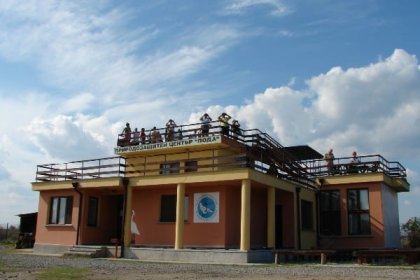Poda's Unique Biodiversity Attracts Visitors from Bulgaria and Abroad All Year Round

Sofia, December 5 (Dimitrina Solakova of BTA) - Bulgaria's Poda Protected Area is a year-round nature destination popular among both local and foreign visitors. The marshland territory some 4 km south of Burgas (on the Black Sea) attracts tourists, birdwatchers and wildlife photographers with its unique biodiversity.
Poda was designated a protected area by the Environment Ministry back in 1989, when it became the first protected territory supervised by a nongovernmental organization, the Bulgarian Society for the Protection of Birds (BSPB). In 2002, Poda was included in the Ramsar List of Wetlands of International Importance. At present, it is managed by the BSPB through the Poda Nature Conservation Centre, built in 1997 by the NGO with the help of the Swiss government as a centre for nature conservation, environmental education, ecotourism, and ornithological information.
The Poda Protected Area with its salt, fresh and mixed water habitats is the home of over 200 plant species, more than 160 species of insects, and tens of species of amphibians, reptiles and mammals, including the largest snake in Bulgaria (the blotched snake) and the smallest mammal by mass in Europe (the Etruscan shrew). A total of 315 species of birds have been observed here on an area of 1 square kilometre, or one-fourth of all bird species in Europe and more than half of the bird species found in Bulgaria.
Poda is the only place on the Bulgarian seaside where one can find a mixed colony of glossy ibis, spoonbill, night, red and squacco herons, little and great egrets, and pygmy cormorant. Poda is also a stop along Europe's second largest bird migration route, Via Pontica, that close to 80 per cent of the world's white stork populations and thousands of species of birds of prey (e.g. white-tailed eagle, marsh harrier) and songbirds fly over each year.
Interesting bird species can be observed at any time of year, including in winter when Poda has many feathered guests from Northern Europe. Among the winter regulars are the near-threatened Dalmatian pelican, the mute, whooper and tundra swans, and greater flamingo. Just a week ago, the Poda Nature Conservation Centre reported the arrival of wild geese and the observation of 15 individuals of the globally threatened red-breasted goose.
Poda's rich wildlife can be seen from the observation terrace of the Centre or during a walk along the visitor's trail, with binoculars and spotting scopes available on site. Photo hides can be rented to watch and photograph birds at any time of day and night regardless of the weather conditions. The Centre's experts offer visitors information about the history and wildlife of Poda, as well as a guided tour of the Centre's permanent interactive exhibition on Poda and the wetlands near Burgas. Information leaflets are available in six languages.
The Poda Nature Conservation Centre is currently open to visitors every single day from 9 a.m. to 5 p.m.
/DS/



 EUR 1.9558
EUR 1.9558
 USD 1.7284
USD 1.7284
 CHF 1.8677
CHF 1.8677